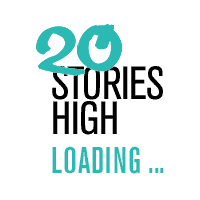
By Keith Saha, Co-Artisitc Director
With the news last week that GSCE drama students don’t need to see a live theatre performance to pass their exam (they can watch a digitized version of Hamlet courtesy of National Theatre Live instead), the debate has begun to rage about the importance of live performance and what threat does our increasingly digital future hold?
In the long term, could new technologies really damage theatres’ business model in a way that Uber and AirBnB have decimated the hotel and taxi industries?
With these thoughts at the front of my mind, I went (courtesy of the British Council) to the IETM meeting in Amsterdam where digital technology and its relationship with theatre was the hot topic.
IETM is a network of over 500 performing arts organisations and individual members working in the contemporary performing arts worldwide: theatre, dance, circus, interdisciplinary live art forms and new media. It’s an incredible network of artists that is completely new to me! Members include festivals, companies, producers, theatres, research and resource centres, universities and institutional bodies.
I was there to make new connections, talk about the work of 20 Stories High and my own practice and of course to interrogate this digital question that is on everybody’s mind.
Now anybody who knows me knows that I am a self confessed geek. I am a huge fan of vintage and modern video games and cardboard virtual reality headsets and I can often be found trying to root my latest android.
However my relationship with the digital world and how it relates to theatre is a complex one. In 2012, 20 Stories did a fantastic collaboration with digital artist Sam Meech on a show called The Universe and Me. It was a cracking show that played with digital mapping and motion-capture with light sources and I think the reason it worked so well is because we were exploring young peoples relationship with technology as part of the narrative of the play.
But I have to be honest and admit that the things that excite me – and lots of the young artists I work with – the most about theatre are actually analogue: poetry, puppetry, live music, beat boxing, dance and movement. I would argue that now we live in a world where we have become the cyborgs, hardwired into the mainframe Matrix-style, the thing that traditional theatre can offer is now something other.
Is tweeting in a theatre piece to change the outcome of the narrative really so cutting edge? Or is it just copying what’s happening in The Voice and the X Factor every Saturday night?
So I went to IETM with my flag firmly placed in the sand but with an open mind and was looking for my firm viewpoint to be challenged and it was, pretty much straight away! There are too many thoughts and ideas to discuss fully in this blog, but the companies and artists that really excited me are listed below (follow the links to find out more about their work)…
- Katy Day and her brilliant company The Otherway Works that explores interactive site-specific theatre with hidden magical digital elements
- Krista Burger an artist from Holland whose surreal live digital explorations are full of humour and anarchy. I’m particularly taken by the piece she made about Michael Jackson living in a huge vagina.
- And the beautiful choreography of David Middendorp who gave a fascinating insight into his journey of marrying dance and tech to create stunning work tha has given him world wide recognition and his put him in the running as a finalist in America’s Got Talent!
So… so far so good!
Also at the seminar (and a particular highlight for many) was Joris Weijdom, a digital theatre pioneer, who explained with clarity and humour the fusion of virtual and augmented realities in the creation of a new mixed reality. In his talk he gave examples such as Microsoft’s Holo-lens and a new laser tag experience called The Void that is currently in development.
So how do we implement these technologies in theatre? Joris somewhat flatteringly told us that as theatre makers, we have 3000 years of experience in how to make theatre, mixed reality practitioners have been doing this stuff for about 3. So they need our help in order to make these commercial experiences into theatre and art, especially writers and dramaturges.
With my mind fully blown, I came away from this and began to imagine a mixed reality theatre world with live and digital puppetry… whether this will exist just in my head or become something real, I don’t know….but watch this space!
So these talks, workshops and the sharing of practice created some real food for thought, but how did all this translate into the shows that were part of the programme?
Well the show that related most to the topic of the Conference was Explorer/Prometheus Unchained by Urland Productions in collaboration with CREW.
This was a piece of theatre so futuristic it felt like I had been beamed onto Star Treks Holo-deck with Picard (I told you I was a geek!). With the live motion capture techniques laid bare, it played with and distorted the realties and followed a psychedelic experience of two Adam and Eve like characters trapped in a virtual world. It was very funny, very clever and visually stunning. But as a piece of theatre, unfortunately I was left unmoved and ultimately didn’t believe that the characters where real… but maybe that was the point?
For me the female character – complete with short skirt and sexy moves – whose voice and avatar was performed by 2 male actors was way off the mark. Not only could I not believe in her as a character but I think the original intention to satirise the sexualisation of women in a digital space was not really challenged and inadvertently re-enforced this stereo-type. Which was a shame because there were so many magic moments and it is evident the form has so much potential.
And like Joris had mentioned in his earlier talk I think it needed narrative and dramaturgy. That aside I could see the potential. It felt like this is what it must have been like for audiences who where watching the first black and white moving pictures of early cinema. And so we must realise it might take another 20 or 30 years for this form to truly develop and be accepted.
However not everything was Digital in the programme. The two main theatre highlights for me were truly analogue.
Lets Do it Ourselves by Wunderbaum was a Punk-Jazz theatrical spectacle about the end of the welfare state and the dawning participation society, which used non-actors from Holland in a game show in which challenging questions were put to the community and the audience about how much we want the state to have a control in our lives. It was complex, funny, moving piece of theatre that will stay with me for a long time… interestingly, it completely divided the IETM audience!
The other show was The Radicalisation of Sadettin K, a deeply moving, complex and personal one person show that explored the artists relationship with Islam, family, and radicalization. This was a show that offered so many questions and danced beautifully around so many ideas, from the conquests of the Ottoman Muslim Empire to the artist’s own experiences of discovering his friend was a racist (which reminded me of the song Racist Friend by The Specials which is still playing on repeat in my head!)
So four days of amazing talks, discussions, debates, ideas and I’m still processing lots of the provocations and questions posed. As to how all of this will affect new younger audiences, artists, future digital theatre experiences and GSCE theatre visits I still don’t know.
However, over the course of the four days, it became clear to me and many other delegates what digital technologies shouldn’t be doing in our practice:
- Digital practices should not be integrated into theatre simply for the sake of attracting new audiences
and…
- Theatre is about telling stories… we should be exploring how digital practices can enhance this storytelling, not become it
So here’s to an exciting but ultimately unknown digital theatrical future!



